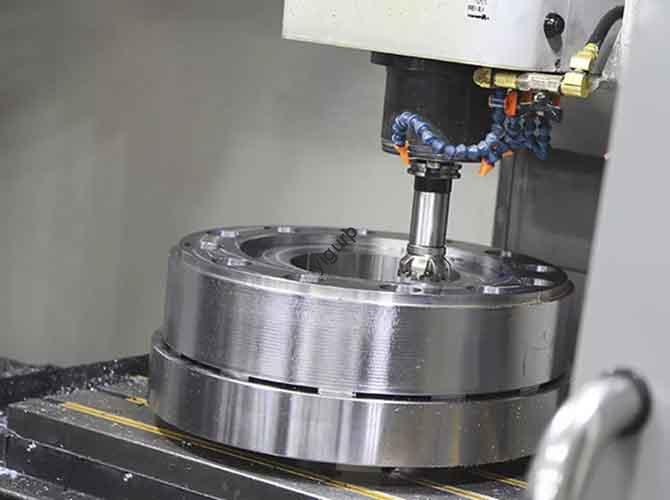In the fast-paced manufacturing world, how do you ensure consistent quality and high efficiency when producing electrodes? La risposta sta dentro Electrode Processing CNC—a computer-controlled technology that has become a game-changer for industries like mold making, elettronica, e aerospaziale. This article breaks down its core value, processo, and applications to help you solve common production challenges.
1. What Is Electrode Processing CNC?
Al centro, Electrode Processing CNC Utilizza il controllo numerico del computer (CNC) systems to automate the machining of electrode materials (PER ESEMPIO., rame, grafite). A differenza dei metodi manuali tradizionali, it relies on pre-programmed code to control tool movement, ensuring every electrode meets exact design specs.
Key Advantages vs. Macchina tradizionale
| Caratteristica | Electrode Processing CNC | La tradizionale lavorazione manuale |
|---|---|---|
| Precisione | ±0.001mm accuracy | ± 0,01 mm (depends on operator) |
| Efficienza | 3x più veloce (24/7 operazione) | Lento (requires breaks) |
| Coerenza | 99% uniform output | 70-80% (operator-dependent) |
| Gestione della complessità | Handles 3D/intricate designs | Limitato a forme semplici |
2. Step-by-Step Electrode Processing CNC Workflow
Wondering how to implement this technology in your workshop? Segui questo lineare, actionable process:
- Progetto & Programmazione: Usa il software CAD (PER ESEMPIO., AutoCAD, Solidworks) to create the electrode’s 3D model. Convert the model into G-code (CNC machine language) Utilizzo del software CAM.
- Configurazione del materiale: Secure the electrode material (PER ESEMPIO., graphite block) onto the CNC machine’s worktable. Calibrate tools (PER ESEMPIO., mulini finali) for cutting/engraving.
- Lavoratura automatizzata: Load the G-code into the CNC system. The machine will automatically control tool speed (5,000-20,000 giri al minuto) and trajectory to shape the electrode.
- Post-elaborazione: Clean the electrode with ultrasonic cleaners to remove debris. Deburr edges using precision files or laser tools to ensure smoothness.
- Controllo di qualità: Usa una macchina di misurazione delle coordinate (CMM) to verify dimensions—critical for mold manufacturing, where even tiny errors ruin batches.
3. Migliori applicazioni: Where Electrode Processing CNC Shines
Why is this technology indispensable? Let’s look at real-world use cases:
- Produzione di stampi: Stampi per parti di plastica (PER ESEMPIO., custodie telefoniche) require electrodes to create detailed cavities. CNC-machined electrodes ensure 100% mold consistency, reducing defect rates by 40%.
- Industria elettronica: Electrodes for semiconductor chips need micro-level precision. CNC systems handle 0.1mm-wide grooves—impossible with manual tools.
- Aerospaziale: Titanium alloy electrodes for engine parts demand high strength and accuracy. CNC machining maintains tight tolerances, even for large components.
4. Latest Innovations in Electrode Processing CNC
Man mano che la tecnologia avanza, how is CNC evolving to solve new challenges? Here are two key upgrades:
- Smart CNC Systems: New models (PER ESEMPIO., Fanuc 30i-B) have AI-powered error detection. They can adjust tool paths in real time if material density varies—cutting waste by 25%.
- 5-MACCHINING ASSIS: Traditional 3-axis CNC limits movement; 5-axis systems rotate the tool and worktable, enabling complex shapes (PER ESEMPIO., curved electrodes for medical devices) in one setup.
5. La prospettiva della tecnologia Yigu
Alla tecnologia Yigu, CrediamoElectrode Processing CNC is not just a tool—it’s a catalyst for manufacturing innovation. Our clients in mold and electronics industries have seen 35% faster production cycles and 50% fewer reworks after adopting our CNC-integrated solutions. We prioritize user-friendly programming and after-sales support, ensuring even small workshops can leverage high-precision machining.
Domande frequenti
- Q: What materials work best with Electrode Processing CNC?UN: Rame (alta conducibilità) and graphite (Macchinatura veloce) sono più comuni. CNC systems also handle aluminum and titanium for specialized aerospace/medical parts.
- Q: How much does an Electrode Processing CNC machine cost?UN: Entry-level 3-axis machines start at $50,000; high-end 5-axis models for complex work cost $200,000+. Yigu offers flexible leasing options for small businesses.
- Q: Do I need skilled operators to run CNC electrode machining?UN: Basic training (2-4 settimane) is enough for programming and operation. Yigu provides free on-site training with machine purchases to reduce setup time.
